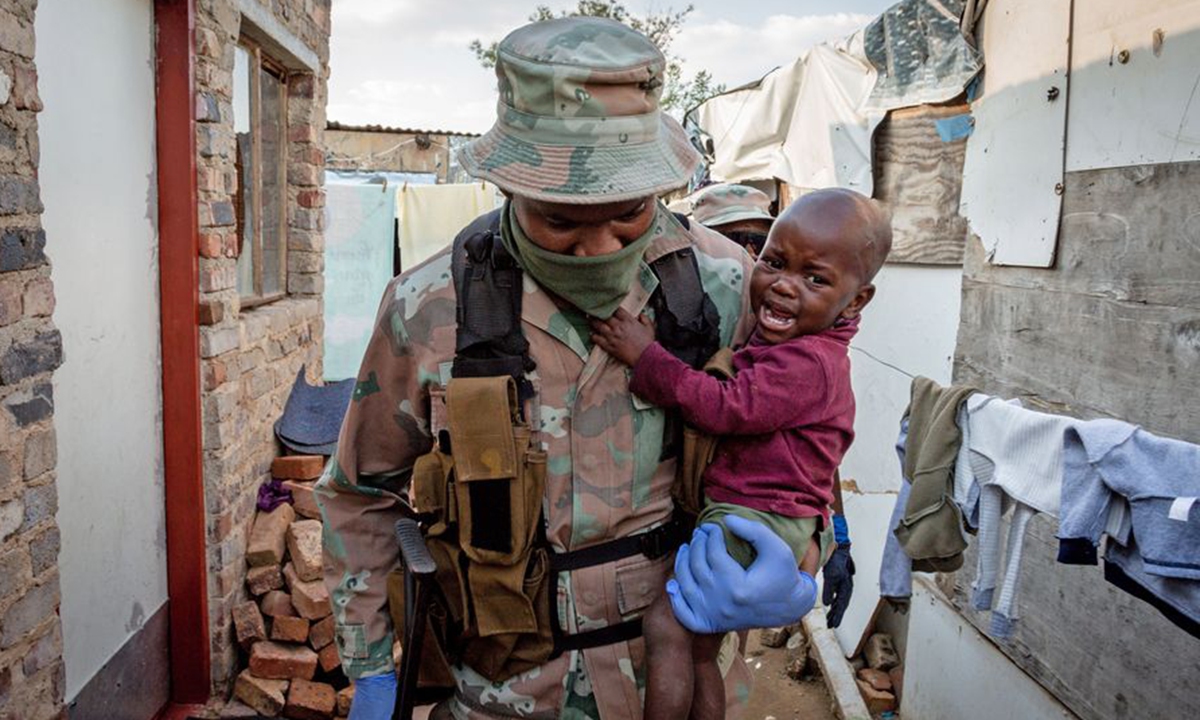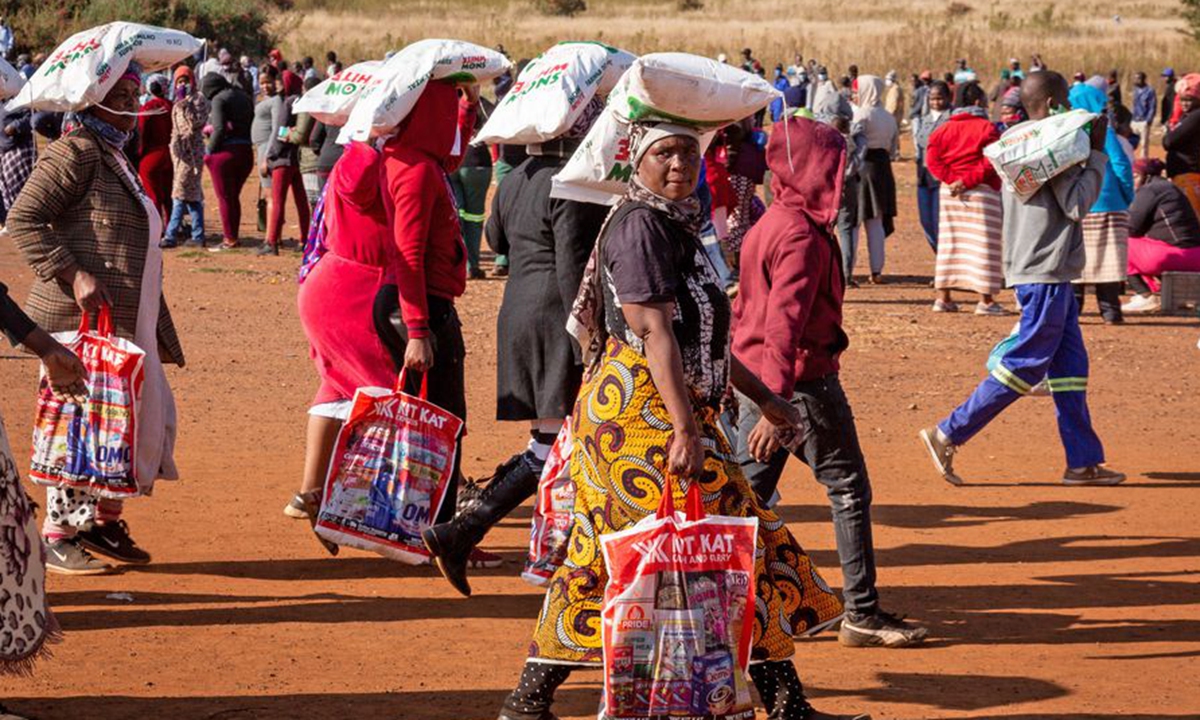Africa's COVID-19 caseload nearing 160,000, while Italy partially reopens border
Source:Xinhua Published: 2020/6/4 16:01:39

A soldier of South African National Defense Force carries a baby in his arm in Johannesburg, South Africa, April 20, 2020. (Photo by Yeshiel/Xinhua)
With the novel coronavirus still in pandemic mode, the African continent has seen a continued growth in the total tally, while Italy, an earlier epicenter of the pandemic in Europe, has begun to partially lift travel bans as its new infections are dropping.
RISING AFRICAN CASELOAD
As of Wednesday afternoon, the number of confirmed COVID-19 cases across the African continent surpassed 158,318, and the death toll surged to 4,508, the Africa Centers for Disease Control and Prevention (Africa CDC) said.
The continental disease control and prevention agency also disclosed that some 67,630 people who have been infected with the disease have recovered across the continent so far.
On Tuesday, Africa CDC said the virus has spread to 54 African countries. Figures from the agency showed that the highly affected countries include South Africa, Egypt, Nigeria, Algeria, Ghana and Morocco.
It also said that the Northern African region is the most affected area across the continent both in terms of positive COVID-19 cases and the number of deaths, followed by the Western Africa region.
South Africa, the worst-hit country on the continent, on Tuesday reported a total of 35,812 confirmed COVID-19 cases. According to the latest data compiled by the Center for Systems Science and Engineering at Johns Hopkins University, the tally now stood at 37,525.
The United Nations Economic Commission for Africa (UNECA) on Wednesday projected that the ongoing pandemic could push 29 million people into extreme poverty across the continent.
The UNECA further stressed that the containment measures established in African countries "have already cost the region some 69 billion US dollars per month and are expected to have a negative impact on the implementation of the Sustainable Development Goals in the region."

People receive food provided by charity groups in Pretoria, South Africa, May 20, 2020. (Photo by Yeshiel/Xinhua)
EASING TRAVEL BAN
Italy, earlier an epicenter of COVID-19 in Europe, partially reopened its border on Wednesday after closing it to all but essential travel for nearly three months.
Starting from the day, people in Italy are allowed to move freely within the country. Cross-border travel restrictions were also eased on the same day, with travelers from the European Union and Schengen countries, as well as the United Kingdom, Andorra and Monaco being allowed to visit the country without subjecting to quarantine.
The step was part of a wider strategy to help restart the Italian tourism industry, which was shuttered along with the rest of the Italian economy at the start of the national lockdown on March 10.
"A month from May 4, when we reopened our manufacturing and construction sectors, we can say the numbers are encouraging," Italian Prime Minister Giuseppe Conte said in a nationally televised press conference Wednesday.
"The trend of new cases is constantly decreasing in all our regions," he said. "This shows the strategy we adopted is and has been the right one."
He added that the government is hard at work to ensure Italy is once again "the safe and coveted destination of the tourists of Europe and the whole world."
Health Minister Roberto Speranza, meanwhile, sounded a note of warning to Italian citizens.
"We must proceed with caution and continue to follow the rules we have learned ... because they are the key in the battle against COVID-19," Speranza said in reference to social distancing in a statement released on Wednesday. "The virus is still very dangerous."
Fresh figures on Wednesday showed that 71 new COVID-19 deaths were registered in the past 24 hours, taking the country's death toll to 33,601, out of a total of 233,836 infection cases.
Posted in: AFRICA